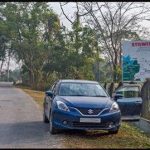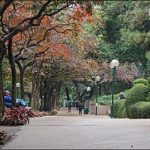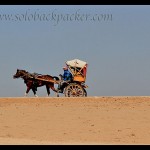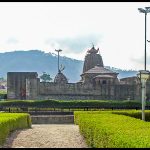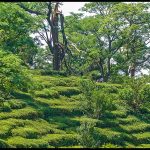While returning from a family trip to Thailand in 2018, filled with cherished memories, I had no way of knowing that it would mark the beginning of a prolonged and unforeseen pause from international travel. The previous fifteen days of hopping from one island to another across the Southern Thailand with my four-year-old daughter, had left us physically drained. Yet, our spirits remained high in the anticipation of many more journeys to come.
The following year, during the summer of 2019, I found myself exploring the serene hills of Mizoram, still unaware that within a few months, an invisible virus would bring the world to a standstill. The emergence of COVID-19 was not merely a global crisis—it was a deeply personal disruption. I remember watching the news in disbelief as borders closed, flights were grounded, and cities grew silent. The vibrant life of airports, once so familiar, faded into memory. My passport, which I had always carried with a sense of anticipation, now lay untouched in a drawer—its pages no longer markers of adventure, but quiet reminders of a paused life.
That time was more than just a health crisis; it was a moment of reckoning. Fear and uncertainty crept into the corners of daily life, and the simple act of planning a journey felt like a distant dream. The restlessness I once embraced as a traveler was replaced by an unfamiliar stillness. And in that stillness, I began to understand just how much the world—and I—had changed.
It took nearly a year and a half for life to gradually return to a state of normalcy following two devastating waves of COVID-19. As the world slowly regained its momentum, it became evident that it was no longer the same. In that confused reality of the post-COVID world, my attention shifted towards exploring the lesser-known regions of North East India. There was something deeply compelling about this untouched region—its gorgeous raw natural beauty, its cultural depth, and its ability to feel both distant and familiar all at once. In a post-pandemic world, the North East India became my solace in the chaos.
In the months following the pandemic, a little angel entered our lives, bringing with her a new sense of joy and purpose. As our family grew, so did our responsibilities. With them, the priorities of life naturally began to shift. Inevitably, my passion for travel took a quieter place in the background. Yet, the urge to travel has always been a part of who I am—and staying quiet at one place for too long was never in my nature.
With time, I gradually found my way back to travel. Once again, I found myself drawn to the lush green forests, peaceful valleys, cool mountain breeze, and the soothing sound of waterfalls. From Manipur to Nagaland, Arunachal Pradesh to Tripura, I continued to nurture my love for travel. Despite the shifting priorities of life, I stayed dedicated to exploring the lesser-known regions of North East India, finding both strength and inspiration in each journey.
My Travel in North East India: A Farewell to the North Eastern Part of India
In 2024, I moved from Guwahati to Prayagraj. This shift was not just about changing cities—it also gave me a fresh outlook on life. Returning to a tier-2 city closer to home, and moving from the busy role of an active Air Traffic Controller to a passive position as an ATC Instructor, brought a much-needed pause in my fast-paced life. After settling in Prayagraj, I began to feel the urge to travel abroad again. With Delhi now closer, booking flights and managing visa processes had become much easier compared to when I was in Guwahati.
However, when I began planning my next trip, I realized that the skill and confidence I once had in organizing random trips seemed to have faded over the years. Since 2019, the world had changed in many ways—geopolitical tensions, travel restrictions, and global conflicts had reshaped the way we move across borders. Airfares had risen sharply, visa procedures to many countries had become more complex, and traveling to previously affordable destinations now involved many more challenges.
I often found myself questioning whether I could still book a flight, secure a visa, and travel alone as I once did. At times, sitting quietly with my thoughts, I would wonder: am I still the same person who once travelled freely, without fear or hesitation? Though my financial situation had improved and I had grown in many ways, the self-assurance I once carried seemed to have slipped away somewhere along the journey.
Amidst all this uncertainty, I noticed a welcome change in visa policies across South East Asia. Countries like Malaysia and Thailand had become visa-free for Indian passport holders. After careful consideration, I finally planned a trip to Malaysian Borneo in 2025. For years, I had held a strong desire to go scuba diving near Sipadan Island in Sarawak—a dream that had stayed with me quietly in the background.
I even considered Jordan and Egypt’s Sinai region (Dahab, Sharm-al-Sheikh), but then dropped that idea due to the ongoing conflicts in Middle-East Asia. Since I was already planning to visit Malaysian Borneo, it made sense to include Brunei in the itinerary as well. Later, I found out that getting a visa for Brunei in Kualalumpur might be difficult based on my travel schedule. I didn’t want to take an extra 2–3 days off from work just to apply for the visa in Delhi. Because of this challenge, I made a last-minute change to my plans and decided to include Kalimantan, the Indonesian part of Borneo, in my trip instead.
Scuba diving has always been an integral part of my travels. While researching diving options in Borneo, I discovered that permits for Sipadan Island, located on the Malaysian side, were very limited and needed to be arranged well in advance. Another option was Derawan Island on the Indonesian side, but reaching it seemed quite challenging. The combination of flights, road travel, and ferry connections made the journey both complicated and expensive. I didn’t want my entire trip to feel rushed just to accommodate a diving experience, so I eventually decided to drop the plan of visiting Borneo altogether.
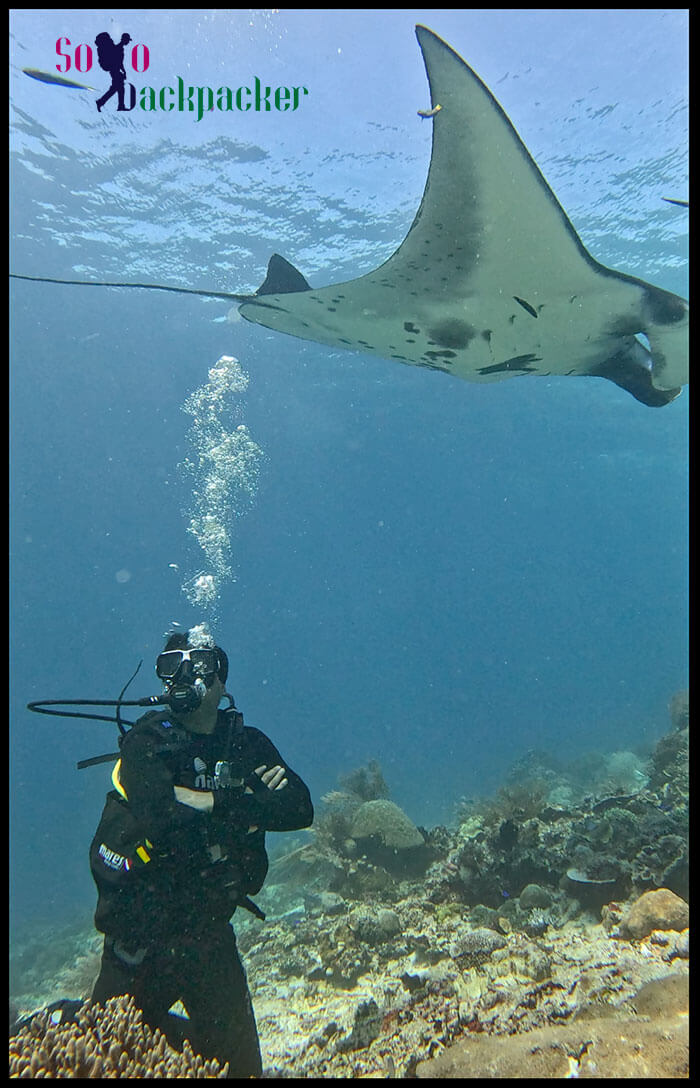
In the meantime, I booked my flight to Indonesia—flying from Delhi to Jakarta via Colombo and back with SriLankan Airlines. Although AirAsia offered cheaper fares through Kualalumpur, I chose a full-service airline. Over the years, I’ve come to realize that paying a little extra for added comfort and convenience is often worth it. With full-service carriers, there’s no need to worry about additional charges for check-in baggage or meals. While Air Asia does offer reasonable rates for domestic flights with baggage included, their international promotional fares from India now usually only cover cabin baggage, with extra charges for checked luggage. Once the flight was booked, one thing became clear—I was finally going to Indonesia.
For my planned 15-day trip, I had roughly 12 full days available, excluding the time spent on air travel. During an earlier visit to Indonesia, I had already explored many of its well-known destinations—Jakarta, Yogyakarta (including Mount Merapi, Borobudur, and Prambanan Temples), Bali, Ubud, Mount Batur, the Gili Islands, Lombok, and Mount Rinjani. This time, I was looking for a quieter experience—visiting a remote island, enjoying peaceful beaches, and doing some scuba diving. I narrowed my options down to Sulawesi and Raja Ampat. However, I soon realized that even 12 days would not be enough to properly explore any one region of Sulawesi—whether it was Manado in the north, Luwuk and the Banggai Islands in the center, or Buton and the Wakatobi Islands in the southeast. Connectivity issues, limited time, and budget constraints made it impractical. As a result, I had to remove Sulawesi from my travel plans.
Read about my trip to Borobudur: A timeless beauty in Java
Raja Ampat is renowned for its world-class scuba diving, but the region is also known for its strong sea currents. Although I hold an advanced scuba diving certification, I do not yet feel confident enough in my swimming skills to handle such challenging conditions. Moreover, it had been more than six years since my last dive. Visiting a place like Raja Ampat—a true paradise for divers—requires proper preparation. It’s important to refresh your skills, build confidence, and improve swimming ability beforehand, so that once you are there, you can fully enjoy the experience without hesitation or fear. For this reason, I had to remove Raja Ampat from my travel plans.
In the middle of the confusion, I found myself looking at a map of Indonesia—and my attention was drawn to the islands of Flores and Komodo. Komodo Island is famous for its dragon, but it is no less than a paradise for scuba diving lovers. Although the sea currents are again very strong in the Komodo region, there are some diving sites in Central Komodo, which are considered relatively safe and suitable for less experienced swimmers like me. A plan slowly began to form: fly from Jakarta to Labuan Bajo on Flores Island, go diving near Komodo Island, and then travel eastward across Flores to Maumere. From there, I would fly back to Labuan Bajo, and then return to Jakarta to catch my flight back to Delhi.
Preparations went smoothly for a few more days, until three unexpected events happened one after another. First, rising tensions between India and Pakistan led to the cancellation of approved leaves. Second, COVID-19 cases began to rise again in Southeast Asia. And third, a volcano beyond Maumere on Flores Island suddenly erupted and started spewing lava. Everything seemed to happen at once, which made it hard to stay focused and motivated. Time was moving quickly, and even a week before my departure, there was still a lot of uncertainty about the trip. At that point, all I had was a one-way ticket from Delhi to Jakarta.
Thankfully, the tension between India and Pakistan eased within a few days. COVID-19 was still a concern, but it didn’t turn into a major obstacle. However, due to the volcanic eruption near Maumere, I had to cancel that part of the plan. Instead, I decided to spend a few days in Flores, then travel to Bali by road and ferry through Sumbawa and Lombok, and from there return to Jakarta by a convenient route.
And that’s how my recent trip to Indonesia finally came together. The day arrived when I let go of my fears, doubts, and confusion, and boarded my flight from Delhi. My journey began with very little confidence and fear of the unknown while checking in at Delhi’s Indira Gandhi International Airport. The initial moments were difficult. My heart was racing as the plane landed in Jakarta. While standing in the immigration line, I kept asking myself—Was this the right decision? Am I really ready for this trip? But the moment I cleared immigration and stepped out of Jakarta airport, I felt a wave of relief and a quiet sense of accomplishment. I eventually made it to Indonesia. Everything around me felt familiar—the crowd, the smiling faces, the energy of the city I once knew. A voice inside me said, “No need to panic. I can do this.”
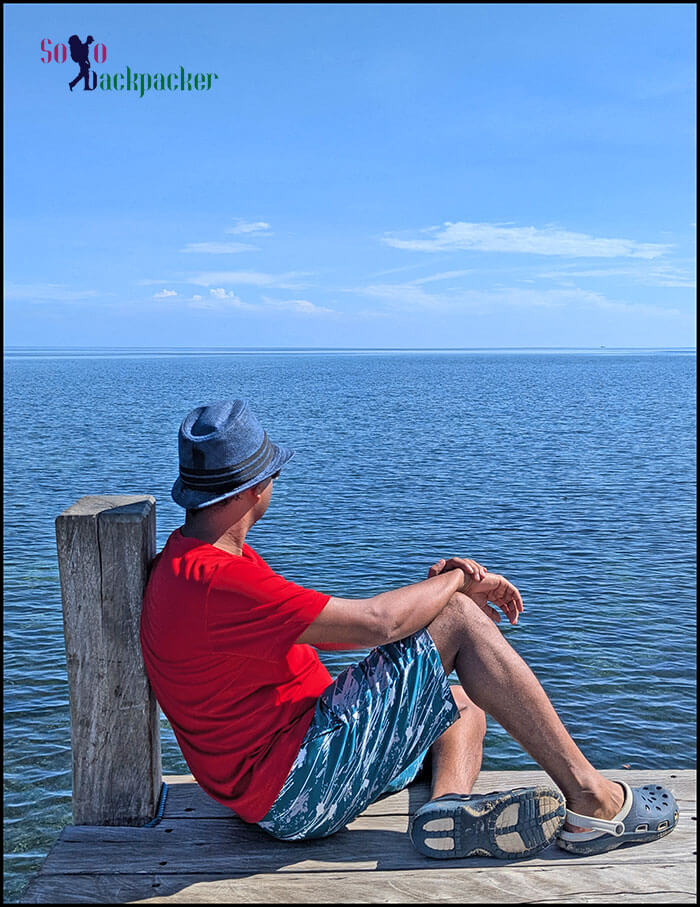
Once I got back into my rhythm, for the next 14 days, I lived every moment of Indonesia with full enthusiasm. With every new experience, my confidence slowly came back. Every smile, every help from a stranger, every hustle and bustle of the local market—all gave me back my lost confidence. While scuba diving in Komodo, in the depths of the ocean among hundreds of colorful fish, when my breath depended on the air coming from the tank, I felt that it is extremely important to live my life again. To live it fully, one does not need every future moment. It is lived only in that moment, without worrying about the future.
Read about my trip to Gili Island in Indonesia: Gili Islands: Tiny Paradises beyond the magical Bali
While staying in Labuan Bajo, I realized the road trip to Sumbawa wasn’t as exciting as I had imagined. So, I changed my plan again. After spending a few days there, I flew to Bali and began a road trip to Jakarta through East Java, visiting Mount Ijen, Mount Bromo, and Tumpak Sewu Waterfall. This area has been a favourite among backpackers for years, so it was easy to find helpful information. I hadn’t explored East Java during my earlier trip, so it felt good to finally experience the rugged beauty of the area. Hiking to see the blue fire of Mount Ijen in the night was physically tiring, but every step also gave a new hope. And then watching the sunrise and sharing the experience with an elderly couple on the hills of Mount Bromo—all this was something that only a true traveler can fully understand.
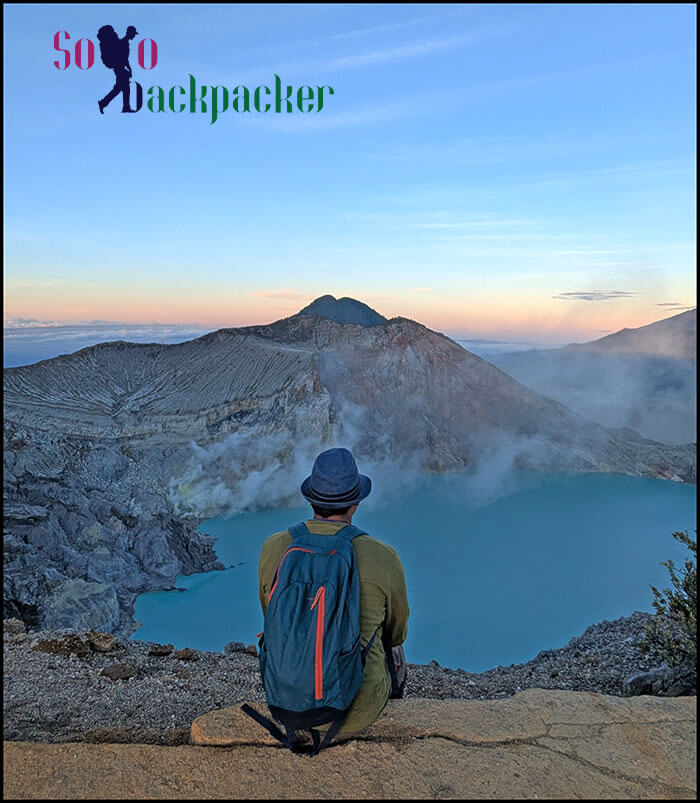
Each day, I planned only two or three days ahead. There were no fixed schedules—just following my heart. And that felt like the greatest freedom I had ever experienced. Before the journey began, I was unsure if I could travel like this again. But not only did I manage to do it, I did it with more awareness and maturity than before. The fear, hesitation, and laziness that had held me back for years seemed to disappear during this trip. These 15 days were not just about exploring places—they marked the return of my self-confidence. It felt like the return of the traveler in me, who once boarded any bus, train, or flight without hesitation, eager to explore the unknown. It also felt like the return of the storyteller, who turns experiences into words and shares them with others.
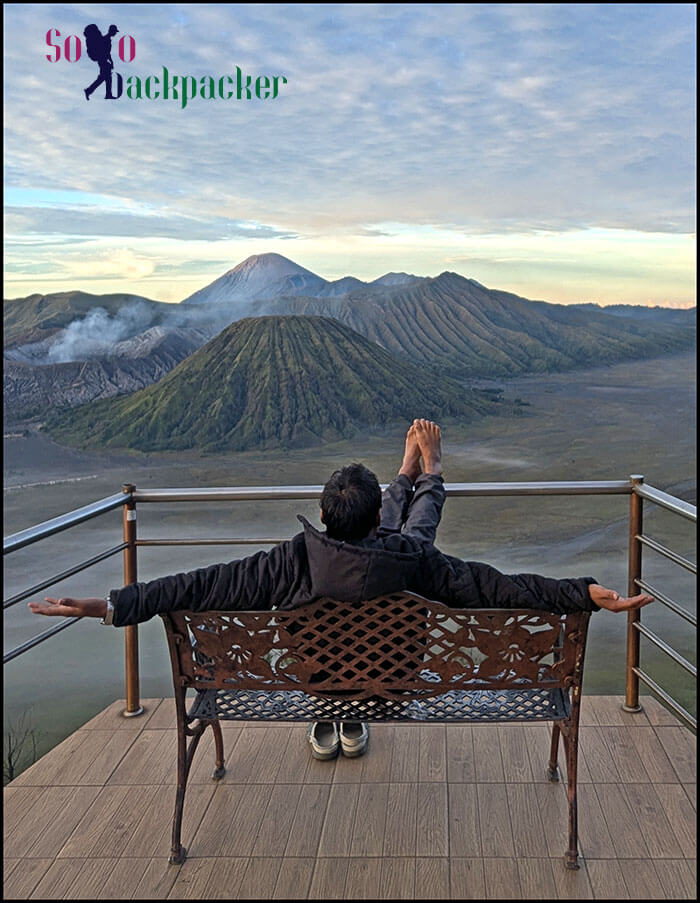
As I returned to Jakarta and made my way to the airport, I felt no regret and no fear—only a deep sense of relief that I had found myself again. This journey reminded me that life can pause, but those pauses are not permanent. Challenges may slow us down, but they cannot change who we are—unless we let the fire inside us fade away. After this trip, I may not be exactly the same as before, but I have become a better version of myself—wiser, steadier, and more alive than ever.
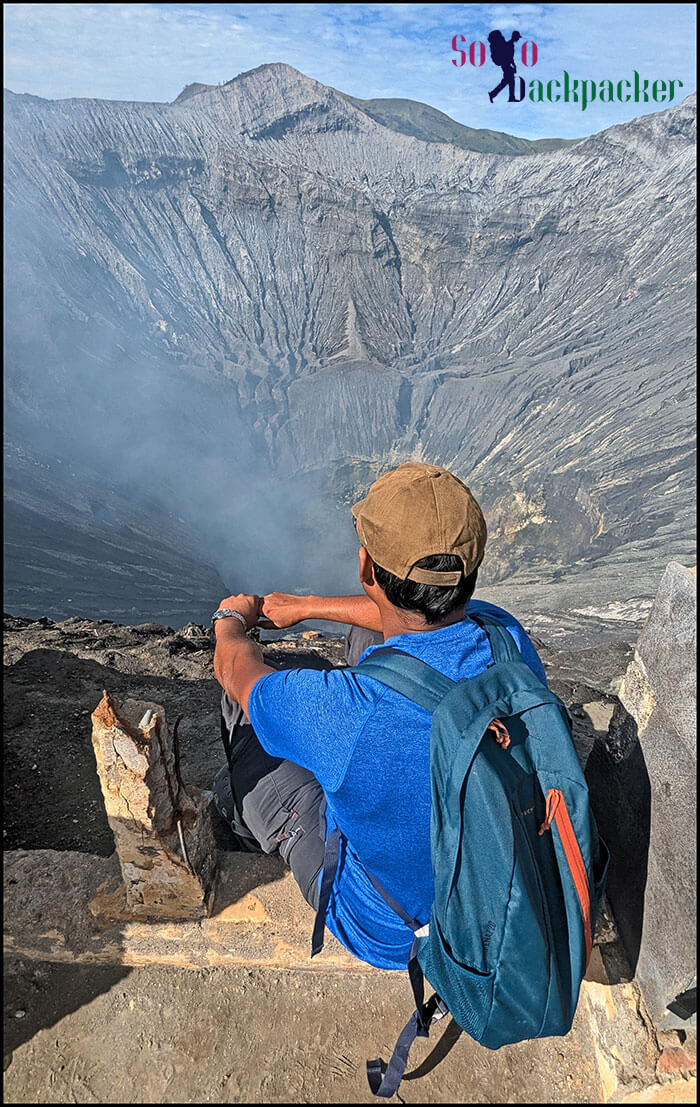
Now, plans for new journeys have started taking shape again. The passport is being renewed, and once more, my mind is wandering across the world map. But this time, there is no fear. I know now that the road will never be smooth, that hurdles will rise—but I must walk anyway. Because for me, travel is not just about changing places; it’s a way of finding myself. Without those spontaneous journeys, something inside me feels incomplete. No matter how heavy the responsibilities become, no matter how much life changes—I remain, at my core, the same. A traveler. A storyteller. A soul forever drawn to the unknown.


